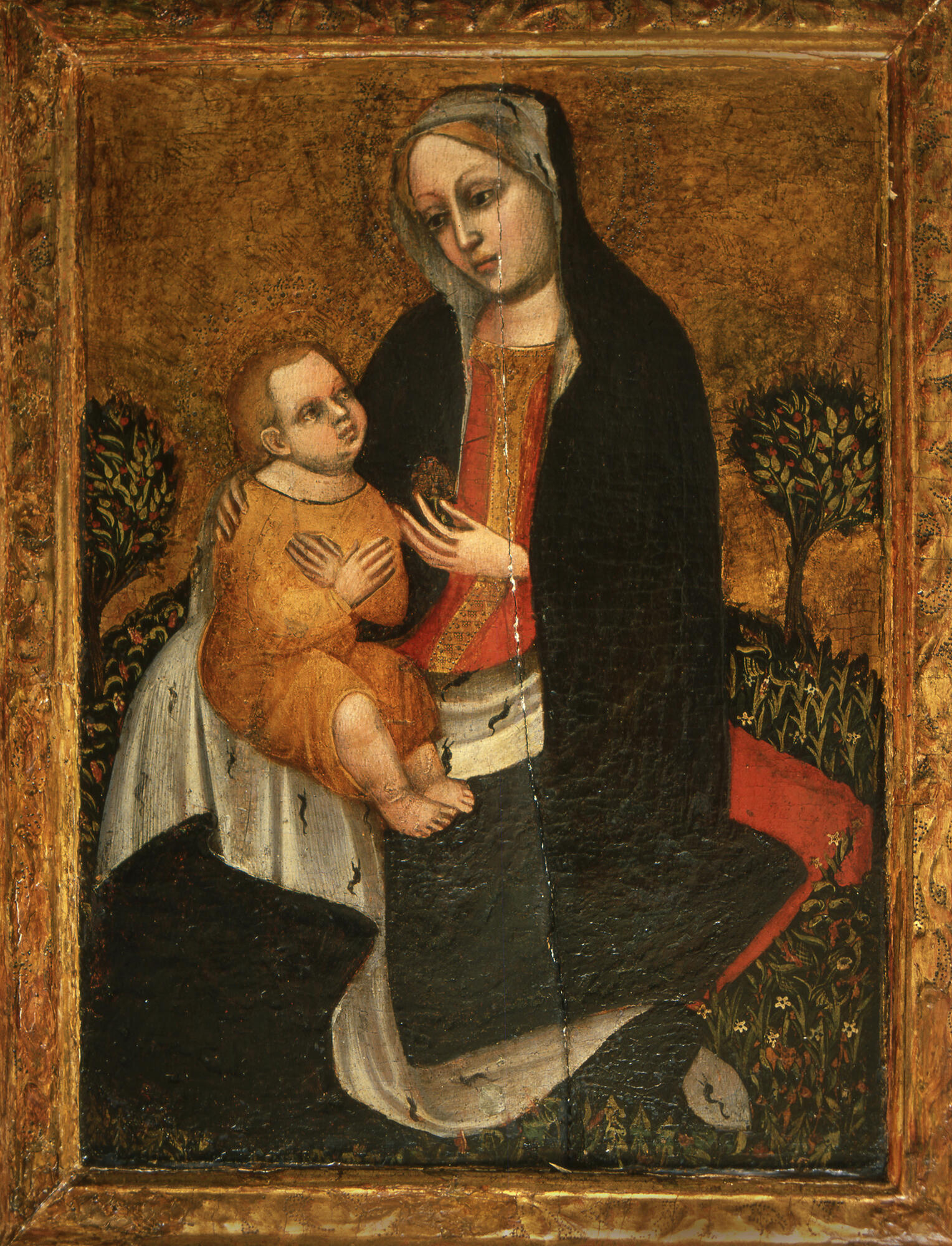“The Virgin and Child in a Landscape” was painted by an unknown artist of the Italian school, presumably in the 14th or 15th century, and is one the gallery’s most valuable exhibits.
In the center of the composition, the Mother of God with the infant Jesus Christ is represented against the background of a landscape. According to Christian tradition, the first icon depicting the Mother of God was created by the evangelist Luke. There are many different types of icons in the iconography of the Virgin Mary. For example, “Hodegetria” (“she who points the way”), is the icon that, according to legend, was painted by Saint Luke: the Madonna holds the child baby in her arms and points to him with her right hand. In Orthodox iconography, “Eleusa”, or “Virgin of Tenderness”, is one of the main types of depiction of the Virgin Mary: here, mother and child are depicted with their heads bowed to each other in a sign of love.
“The Virgin and Child in a Landscape” belongs to the type known as “Madonna of Humility”, which developed in the 14th century and became widespread in Western European art, especially in Italian painting. This type was often combined with the iconography of the “Nursing Madonna”. The Mother of God is depicted sitting on the ground on a small cushion, showing one of the main Christian virtues — humility. It is assumed that the first artist who created this iconographic type was Simone Martini — a famous Italian master and a representative of the Siena school of painting.
“The Virgin and Child in a Landscape” dates back to the “trecento” — a transitional period from the Middle Ages to the Renaissance. It constitutes a combination of the iconographic principles of the Middle Ages with some of the achievements of the new artistic system, in terms of figurative and plastic means. The artist uses a traditional composition and a conventional golden background while aiming to reproduce three-dimensional space, exercising the chiaroscuro modeling of volume. However, he was not yet able to succeed in a complete and consistent way. Unlike the Byzantine icons, in which the infant looks at the viewer, here his gaze is turned to the mother, which makes the ambiance of the work more intimate.
In the center of the composition, the Mother of God with the infant Jesus Christ is represented against the background of a landscape. According to Christian tradition, the first icon depicting the Mother of God was created by the evangelist Luke. There are many different types of icons in the iconography of the Virgin Mary. For example, “Hodegetria” (“she who points the way”), is the icon that, according to legend, was painted by Saint Luke: the Madonna holds the child baby in her arms and points to him with her right hand. In Orthodox iconography, “Eleusa”, or “Virgin of Tenderness”, is one of the main types of depiction of the Virgin Mary: here, mother and child are depicted with their heads bowed to each other in a sign of love.
“The Virgin and Child in a Landscape” belongs to the type known as “Madonna of Humility”, which developed in the 14th century and became widespread in Western European art, especially in Italian painting. This type was often combined with the iconography of the “Nursing Madonna”. The Mother of God is depicted sitting on the ground on a small cushion, showing one of the main Christian virtues — humility. It is assumed that the first artist who created this iconographic type was Simone Martini — a famous Italian master and a representative of the Siena school of painting.
“The Virgin and Child in a Landscape” dates back to the “trecento” — a transitional period from the Middle Ages to the Renaissance. It constitutes a combination of the iconographic principles of the Middle Ages with some of the achievements of the new artistic system, in terms of figurative and plastic means. The artist uses a traditional composition and a conventional golden background while aiming to reproduce three-dimensional space, exercising the chiaroscuro modeling of volume. However, he was not yet able to succeed in a complete and consistent way. Unlike the Byzantine icons, in which the infant looks at the viewer, here his gaze is turned to the mother, which makes the ambiance of the work more intimate.



